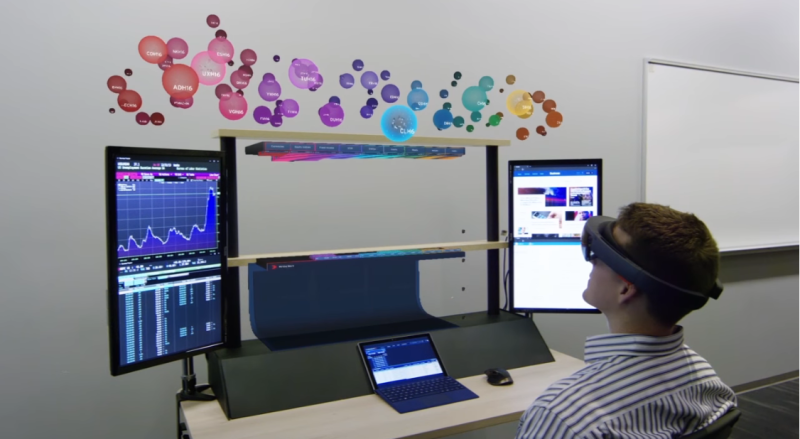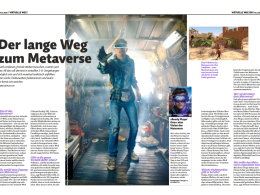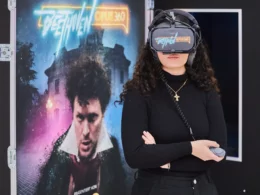Because of the Corona crisis, many bank employees continue to work from home. The major Swiss bank UBS is now trying to bring back the feeling of their workplace, at least to the traders.
Despite the still ongoing Corona pandemic, banks are gradually trying to find their way back to everyday life. Some are trying to do this by gradually bringing their employees back into the office, while others are staying in their home offices.
The major Swiss bank UBS has now taken a technologically interesting approach to how at least its traders could get back to their usual routine, if they want to do so at all.
Trading in the pandemic
As the British "Financial Times" (Article subject to payment) reported, the big bank has set up a task force to deal with the realignment of the trading floors orphaned by the crisis. This task force has now made some proposals for home office hours.
One proposal is to give Google Hololenses to traders so that they can recreate their jobs at home with the help of augmented reality. After all, such a Hololens costs 3,000 dollars at retail.
Screens for feeling
The head of UBS in the UK,Beatriz Martin, Chief Executive of UBS UK, told the Financial Times: "If people really can't come into the office, can we create a virtual presence?" The big bank is now considering experimenting with the tools that are already in place.
Incidentally, another - probably less convincing - consideration of the UBS task force was to equip traders' desks with screens showing live feeds from their office neighbours so that the sense of community would not be lost.
Augment Reality still a dream of the future
UBS is not the first major bank to experiment with Hololens. The American Citigroup, for example, was considering the use of HoloLens headsets for traders. (Video below). Four years ago, she developed an augmented reality workstation that combined 3D holograms and real-time financial data.
According to the Financial Times, the Citi system was designed for use by large clients who could interact with the bank's traders and have huge graphics projected into their offices. But the US bank ultimately did not introduce the headsets because the technology was too limited in terms of display size, processing power and battery life, according to a person briefed on the plans.
Source: finews / Youtube









